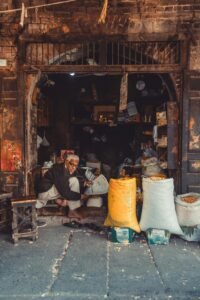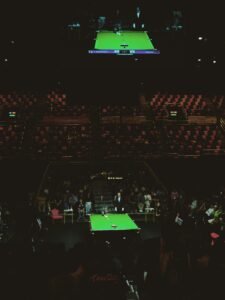Foreign experiences of state and private support of public art in the USA

ABSTRACT
Country Support:
The U.S. public art support system blends government funding, local initiatives, and private sponsorships. Agencies like the National Endowment for the Arts (NEA) contribute to community art projects.
Historical Background:
Public art evolved from symbolic monuments in the Founding Era to its integration into post-World War II urban development. The Arts Percentage programs of the 1960s and public-private partnerships in the 1980s highlight the dynamic nature of public art.
Contemporary Dynamics:
Public art reflects diversity and inclusivity, emphasizing community participation. Challenges include debates over fund allocation, disputes on art removal, and discussions about public and private entities’ role in cultural identity.
Literature Review:
Works like “Public Art the World’s Eyes” provide a global context.
Theoretical Framework:
The study employs a robust theoretical framework, including Cultural Policy Studies, Political Economy of Art, Critical Theory of Social Art, Civil Democracy, and Public-Private Partnerships in Cultural Management.
Public Art in the United States:
A Complex Interplay of Government and Private Initiatives
Country Support:
Public art in the U.S. benefits from publicly funded programs and initiatives. Government agencies like the National Endowment for the Arts (NEA) fund community art projects.
Local Government Initiatives:
Public art programs in cities and towns enhance neighbourhood aesthetics and reflect regional character. Examples include the Percent for the Arts program.
Personal Support:
Private organizations, including corporations, foundations, and philanthropists, co-sponsor public art projects. Private donors and foundations provide grants and sponsorships to artists and organizations.
Public-Private Partnership:
Public-private partnerships create monumental works of art that define public spaces. This partnership brings financial resources to the art world and fosters shared responsibility for cultural development.
Challenges and Controversies: Public art support in the U.S. faces challenges such as the allocation of public funds, the role of art in public space, and issues of representation and inclusion
HISTORICAL BACKGROUND:
18th Century: Founding Era
In the United States’ early years, the focus was nation-building, and public art was often symbolic and memorable. People built statues and monuments to honour national heroes, such as the Washington Monument in Washington, D.C.
New Deal Era: 1930s–1940s
New Deal Programs
The Great Depression led to the beginning of the New Deal. Programs include the Good Works Administration (WPA) and the Federal Apprenticeship Program (FAP). These programs aim to provide career opportunities to artists and promote culture. Public art flourished during this period, including paintings, sculptures, and community projects.
After World War II: 1950s to 1960s
Urban Development and Cultural Expansion
As post-industrial development developed, urban innovation included public art beautifying the urban landscape. Public and private partnerships have led to the integration of art into public spaces, reflecting America’s national interest in culture.
Art Percentage: 1960s to 1970s
The Rise of the Arts Percentage
Many cities and states instituted “Art Percentage” programs that required the public to allocate a portion of the budget to the arts. This approach ensures the integration of art into public construction projects and emphasizes the importance of cultural development.
Public-Private Partnerships: 1980s to Present
Public-Private Partnerships
Public-private partnerships have become increasingly important, with businesses and foundations supporting the public sector—picture drawing. Private support, donations and partnerships are crucial to the financing and success of large-scale arts projects.
Updated now: 21 Century
Diversity and Inclusion
Public art in the United States reflects various styles, media, cultures, and cultural influences. There is increasing emphasis on community participation, inclusivity and quietness in public spaces.
Challenges and Controversies:
- Currently, Allocation and Disputes
- Ongoing controversies include:
- Debates over allocation.
- Disputes over allocating funds for the destruction or removal of public art.Disputes over government support and freedom of the arts.
- Balance problem.
Impact on Cultural Identity:
Cultural Identity and Expression
Public art in the United States has become a powerful tool for cultural expression, encouraging dialogue, and enhancing sites. It highlights the country’s diverse heritage and cultural development.
The historical context shows a change in US government policy, the economic context, and people’s attitudes towards public art. It also touches on the ongoing debate about the role of public and private organizations in shaping the country’s culture through art exhibitions.
LITERATURE REVIEW:
Foreign experiences of public and private support for public art, using the United States as a case study. This selection includes academic research and critical perspectives on “Public Art the World’s Eyes” by Peter Sells and Christine Chambers.
This comprehensive book explores public art worldwide, providing insight into different cultural contexts, government policies, and private initiatives. While providing a global perspective, it can be a valuable resource for understanding how the US experience fits into the broader international landscape.
“Public Art and the Fragility of Democracy” by Harriet F. Sen.
Your work explores the relationship between public art and democracy, exploring the challenges and tensions that arise when art is made public. Drawing on examples from different countries, this book provides an essential lens for analyzing the role of public and private organizations in shaping public art.
“The Paradox of Public Art” by Kenneth T. Jackson.
Focusing on the controversies surrounding public art in the United States, Jackson’s work provides historical context and explores debates over public funding, artistic freedom, and public engagement. This can provide valuable insight into how public and private support has evolved.
“The Activist Impulse: Artists and Social Change, 1915-2015,” by Eric Robertson and Mike Murawski.
The collection explores the intersection of art and activism, showing how artists engage with social and political issues. Focusing not only on community art, it also looks at the broader role of art in society and how various organizations, including public and private organizations, support socially engaged artistic practice.
“Social Art and Books” by Barbara Goldstein
Goldstein’s book is a practical guide to planning, launching, and financing community art projects. Based on the American experience, it provides information on the dynamics of public-private partnerships and practical considerations for implementing public art.
“Art, Space and the City: Public Art and the Urban Future, edited” by Malcolm Miles and Tim Hall.
This edited volume brings together diverse perspectives on public art and its relationship to urban space. Chapters include several international case studies that offer a comparative lens to understand how different countries approach the challenges and opportunities associated with public art in urban settings.
“Public and Real: Political Art in the Western Hemisphere in the 1930s” by Alejandro Anreus.
Anreus focuses on the political dimension of social art, exploring how artists engage with social issues. The book’s insights focus on the 1930s and can be applied to contemporary debates about the place of art in public spaces and the different forms of support it receives.
This work offers new insights into foreign experiences of public and private support for the public and the arts, using the United States as a case study, and provides a framework for further research in this dynamic and growing field.
THEORETICAL FRAMEWORK:
Understanding Foreign Experiences of Public and Private Support for Public Art:
Cultural Policy Studies: Analyzes how governments formulate and implement arts policies. Contributes to understanding the reasons for state support for arts and the impact of cultural policies on artistic expression. Key contributors include Pierre Bourdieu’s concept of cultural capital, Richard Peterson’s model in the field of culture, and Tony Bennett’s Theory of Cultural Politics.
The Political Economy of Art: Examines the relationship between economic structures, political power, and artistic production. Contributes to understanding how economic interests relate to cultural politics and influence public art projects. Key contributors include Herbert Marcuse’s analysis of the sphere of culture, Theodor Adorno and Max Horkheimer’s concept of the field of culture, and Raymond Williams’ Thoughts on Cultural Materialism.
Critical Theory of Social Art: Examines the role of public art in challenging social norms and promoting civic engagement. Contributes to understanding the impact of public and private support on the content, accessibility, and democratic potential of public art.
Civil Democracy: Emphasizes inclusion, diversity, and democratization of cultural resources. Addresses issues of representation, public participation, and accessibility in public art projects.
Public-Private Partnerships in Cultural Management: Examines the partnership between government agencies and private organizations. Contributes to understanding the tensions and synergies that arise when public and private interests come together.
RESEARCH METHOD:
• Government Reports and Policies: Review official reports and policies from government agencies to understand funding programs, community art initiatives, and government support for the arts.
• Interviews with artists and stakeholders: Interview artists, curators, government officials, and representatives of private organizations involved in community art projects.
• Examples of Public Art Projects: Explore publicly and privately sponsored public art projects in the United States.
• Public Opinion Survey: Collect public opinion about public art to understand how the community perceives the role of government and private organizations in supporting public art.
• Manifestos and Manifestos: Explore manifestos, manifestos, and writings to understand the motivations and philosophies of artists involved in public art.
• Media and Criticism: Examine media coverage of public art initiatives to understand public discourse, debate, and community reaction to public and private support for public art.
• Archival Materials: Explore historical records related to public art initiatives to understand the evolution of public and private support for public art over time.
• Community Engagement Documents: Review documents related to community engagement in public art projects.
• Artist Residencies and Scholarships: Explore programs that provide publicly and privately funded artist residencies or scholarships.
• Academic Research and Cultural Perspectives: Explores a scholarly perspective on the relationship between public and public support for the arts.
FA/QS:
How does the US government support public art?
The U.S. government supports public art in various ways, including through the National Endowment for the Arts (NEA) and local initiatives. Grant programs like Percent for Art allocate a portion of the construction budget to public art installations that support urban areas.
What is the role of private organizations in supporting public art in the United States?
Private organizations, including corporations and foundations in the United States, have significantly contributed to public art. Business support, philanthropy, and public-private partnerships provide opportunities and foster culturally rich, collaborative efforts.
How are public art projects selected and implemented in the United States?
Selecting and implementing public art requires collaboration. Government agencies, artists, and community members are often included in the decision-making process, providing diverse perspectives and community ideas in the selection and execution of artwork.
What are notable examples of public and private support for the arts in the United States? Examples include the city-financed “Chicago Picasso” sculpture and the privately financed “Gates” installation in Central Park by artists Christo and Jeanne-Claude. These projects highlight the diversity of resources and art exhibitions in the United States.
How did public opinion influence the beginnings of public art in the United States?
Public opinion is vital in the creation of public art projects. Community evaluation and engagement help gauge interest and concerns to ensure public art programs engage communities and benefit the local environment.
What challenges and debates exist regarding public and private support for public art in the United States?
Challenges include discussions about the distribution of funds, artistic freedom, and representation. The debate continually explores the balance between public and private interests and addresses the question of each profession’s role in creating a cultural landscape.
OBJECTIVES:
Reviewing Government Services: Examine government publications and policies to understand the processes, procedures, and changes in government support for the public to take an art exam in the United States.
Assessing the role of private organizations: Explore the contributions and responsibilities of private organizations, including corporations, foundations, and volunteers, in supporting public art.
Learn the selection process for public art projects: See how public art projects are selected and implemented in collaboration with government agencies, expert actors, and community participants in the decision-making process.
Showing Notable Examples of Public Art Projects: List and describe notable examples of public and private support for public art in the United States that appeal to diverse resources and art exhibitions.
Look at public opinion: Look at public opinion around public art leaders, using research and engagement hands in the community to understand how community interests influence the project.
Exploring challenges and controversies: We are exploring challenges and controversies surrounding public and private support for public art, including discussion of issues of funding distribution, artistic freedom, and representation.
CONCLUSIONS :
The US public art landscape is dynamic and diverse, with various funding sources, local initiatives, and public-private partnerships. The historical evolution of public art mirrors societal values and changes in government policies. However, the support for public art faces challenges such as allocation of funds, representation, and inclusion issues.
Global context and comparative perspectives provide a broader understanding of the dynamics of public and private support for public art. Public art has become a powerful tool for cultural expression, fostering dialogue and enhancing public spaces. Public opinion and participation in the selection and execution of public art projects emphasize the democratic nature of cultural expression.
Artistic freedom and social engagement are also crucial in public art, as they serve as a medium for social change and challenge norms. Addressing challenges and embracing diverse perspectives will be crucial in shaping the future of public art in the US and beyond
Visit: Timebuissnesnews.com









